The 12 Days of Christmas song is a classic, and people often debate the meaning of the lyrics. In the song, the lyrics discuss gifts given by a true love, but the lyrics have changed over the years. One thing people often don’t realize is that the song references birds from the 12 days of Christmas.
Most people think the 12 days of Christmas begins before Christmas and count down the days leading up to the big day. However, those days actually refer to Christmas and the following days, up to January 6. This timeframe is based on the birth of Christ on the 25th and the day the three wise men came, which is January 6th.
The earliest recorded version of The 12 Days of Christmas was in an antique book from 1780, Mirth With-out Mischief, sold by Sotheby’s in 2014. This book of children’s activities and rhymes contains the original lyrics, which were later put to music. However, the most popular version that most know today was composed by Frederic Austin in 1909.
Historians believe the song has French origin and involved a game of memory and forfeits where players sang the lyrics and had to remember them or would have to kiss their opponent or give them another favor.
However, people often look into the symbolism of the birds from The 12 Days of Christmas. Keep reading to discover the birds from the 12 Days of Christmas and their significance in this Christmas carol.
1. A Partridge in a Pear Tree
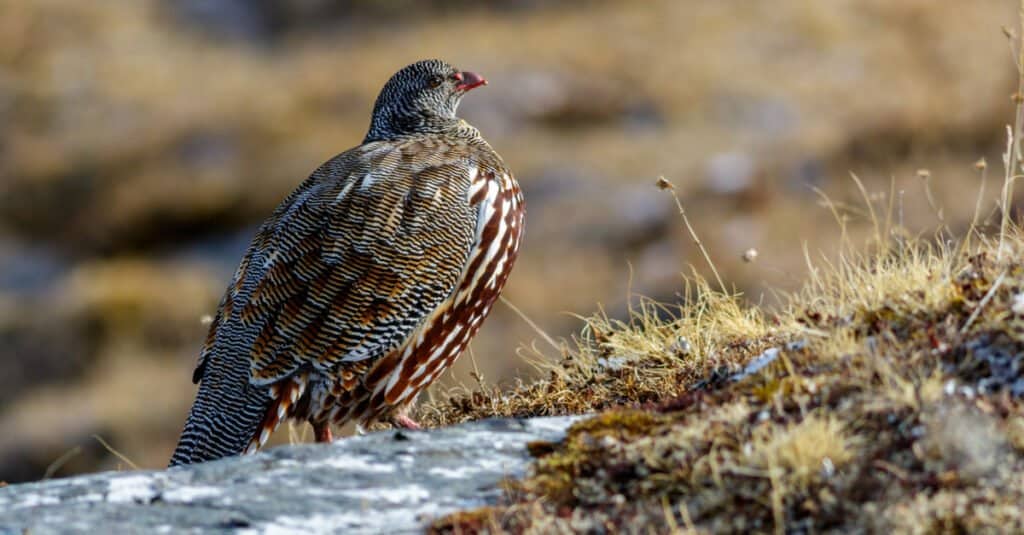
A partridge likely won’t be in a pear tree, but the symbolism of both is significant to the song.
©Bhavesh Rathod India/Shutterstock.com
Although it’s unlikely to find a partridge in a pear tree, the bird is the first and one of the most intriguing birds from the 12 Days of Christmas song. The partridge is in the pheasant family and is a common game bird worldwide. It’s unclear which species the song refers to, but it’s most likely the red-legged partridge (Alectoris rufa) or the grey partridge (Perdix perdix), also known as the English partridge.
In Greek mythology, the goddess Athena, in an act of mercy, transforms a betrayed schoolboy into a partridge and punishes his betrayer. However, another likely translation of the meaning could refer to the birds being easy to digest and one of the healthiest food options in the medieval era, so a lover would thoroughly enjoy eating one for Christmas.
Another idea is that partridges leave their flocks during winter months and form a pair. It holds a significant meaning of love, which is perfect for a gift to a lover.
2. Two Turtle Doves
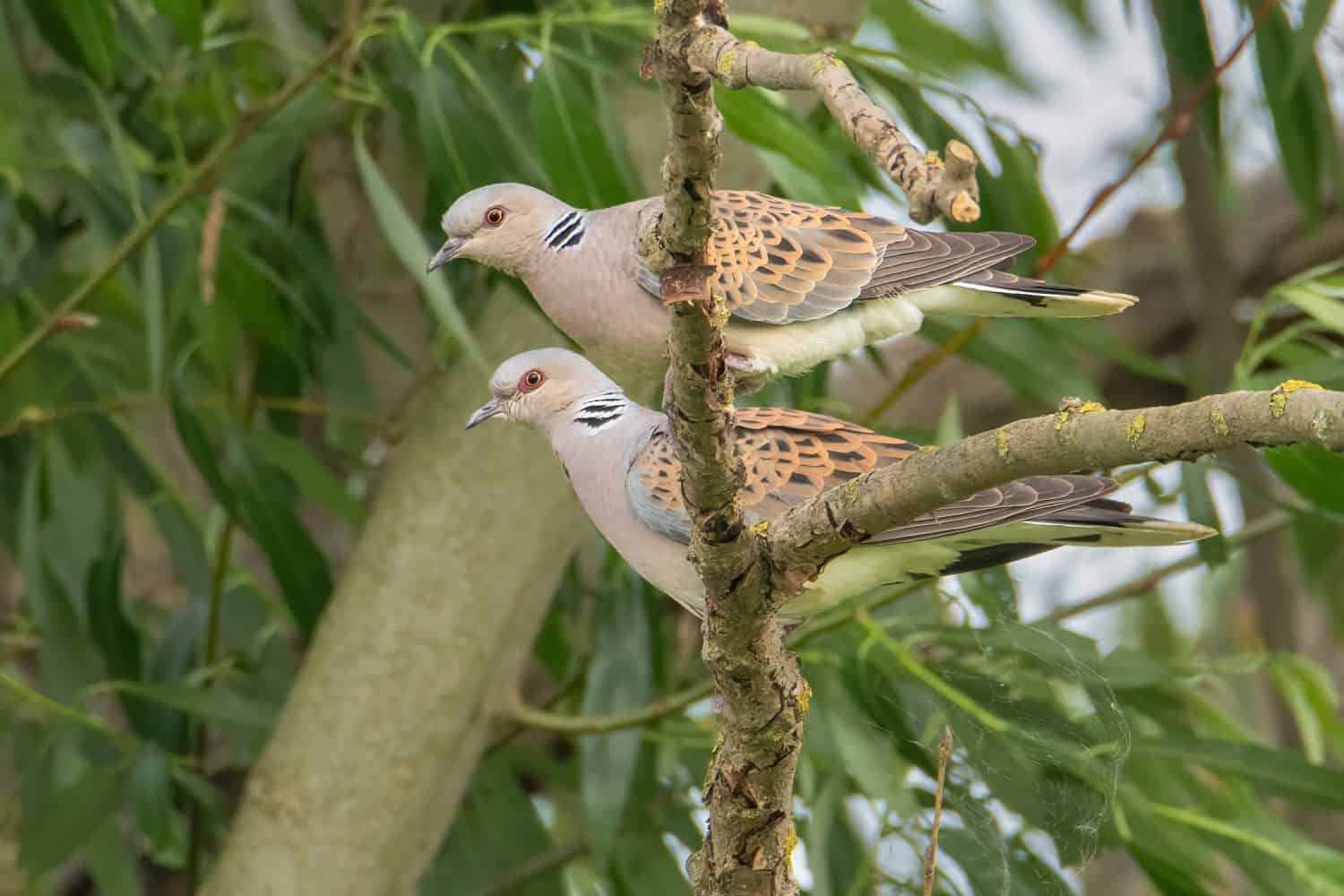
Turtle doves signify enduring love, as the gift giver in the 12 Days of Christmas wants to convey.
©Catleesi/Shutterstock.com
Two turtle doves are the second gift given on the second day. The European turtle dove (Streptopelia turtur) is part of the Columbidae bird family, which includes over 350 species of doves and pigeons. European turtle doves were abundant in Western Europe when the song originated. However, the species is in decline and listed as Vulnerable on the IUCN Red List.
A pair of turtle doves symbolize the Old and New Testaments and the importance of understanding both to complete the story. They are associated with innocence, purity, humility, and a sacrificial offering.
Turtle doves are also a common symbol of enduring or abundant love. Doves are monogamous and mate for life. The male and female work together to incubate their eggs and raise their hatchlings until it’s time for them to leave the nest.
3. Three French Hens
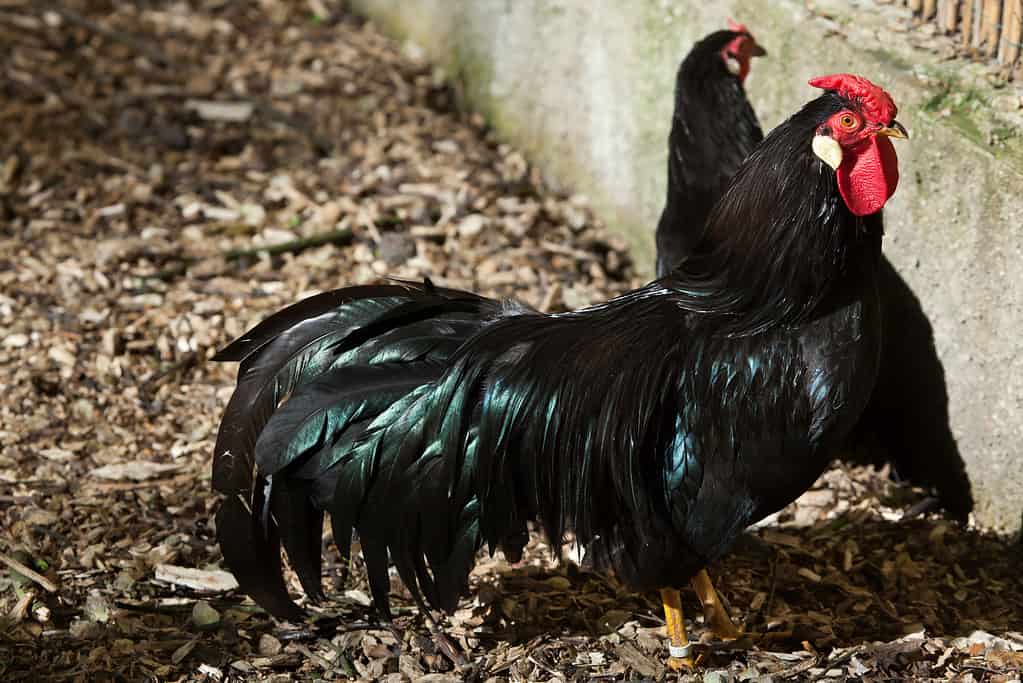
French hens were a popular food amongst the wealthy because of their flavor and high-quality eggs.
©wrangel/iStock via Getty Images
French hens (Gallus gallus) were well-known historically for being food for the wealthy. They were often stuffed, stewed, roasted, or baked.
They also produced high-quality eggs, making them an asset to those who owned them. Being gifted three French hens would have been one of the best gifts a lover could give during the time the song originated.
4. Four “Calling” Birds
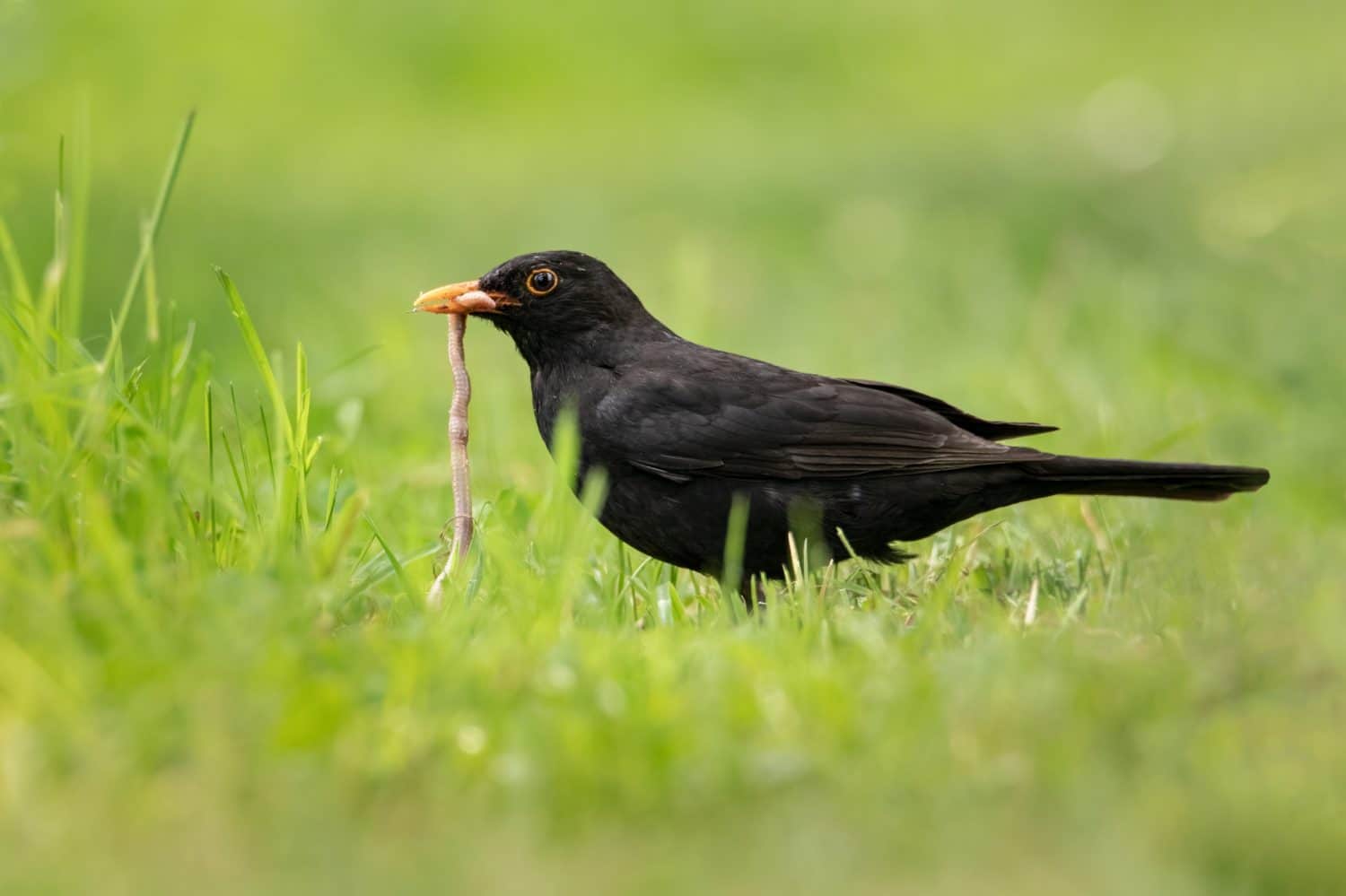
A blackbird signifies power and mystery.
©Catleesi/Shutterstock.com
The lyrics most of us know refer to “four calling birds”, but the original version referenced “four colly birds”. Colly means “black as coal or soot”, so this line symbolizes blackbirds (Turdus merula) and their power and mystery.
5. Five Golden Rings (Pheasants or goldspinks)
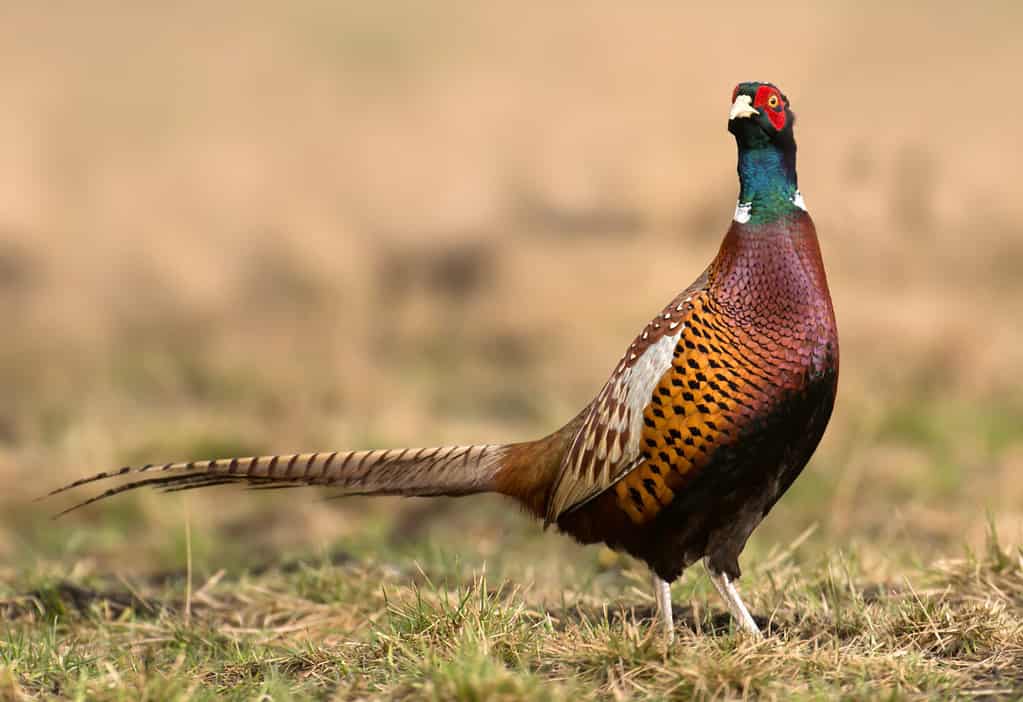
The “five golden rings” line in the 12 Days of Christmas may refer to a ring-necked pheasant.
©Piotr Krzeslak/Shutterstock.com
While five gold rings could indicate literal rings of gold, it fits with the bird theme if you consider the ring-necked pheasant (Phasianus colchicus). These birds symbolize fire and sensuality, while the number five represents magic and sensuality. However, the illustration in Mirth and Mischief was jewelry, so the interpretation is debatable.
6. Six Geese a-laying

People commonly celebrated by eating geese during the Middle Ages.
©Albert Beukhof/Shutterstock.com
Goose was the main part of Michaelmas feasts on September 29th in the Middle Ages, so receiving it for Christmas, like in the song, could indicate a celebration. The song is likely about the greylag goose (Anser anser), the ancestor of domesticated geese. It represents the air element, as geese are birds of the air or sky.
7. Seven Swans a-Swimming
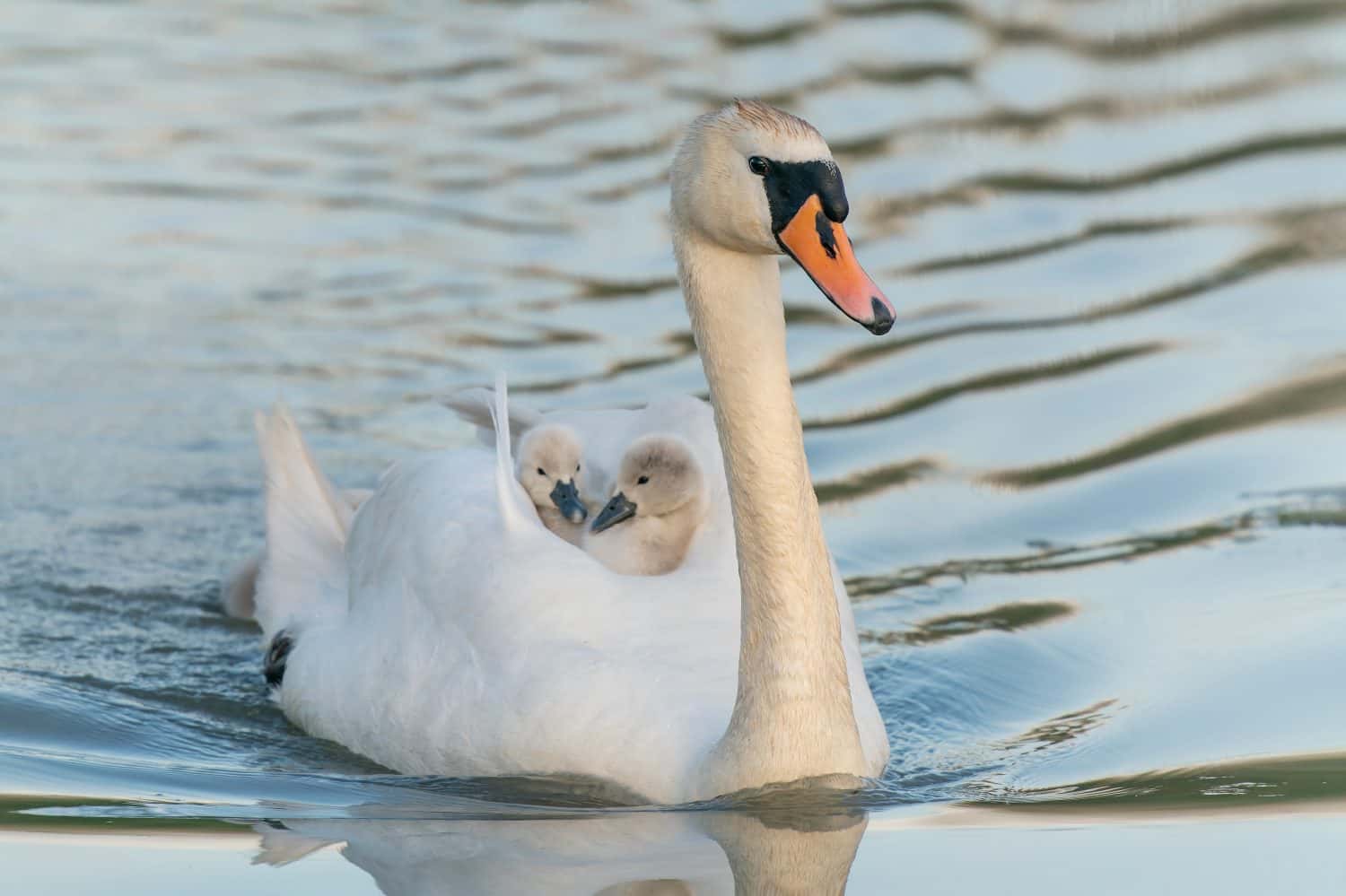
Swans indicate elegance and romance, and being the seventh bird of the song alludes to mystery.
©Albert Beukhof/Shutterstock.com
The song doesn’t specify which swan species the lyrics refer to, but the most common swan in the area the song originated in is the mute swan (Cygnus olor). Swans often symbolize elegance and romance, and the number seven represents mystery and elegance.
8. Eight Maids-a-Milking

The eighth bird in the 12 Days of Christmas is likely a magpie.
©iStock.com/JMrocek
The “eight maids a-milking” line likely refers to magpies (pica pica) as they are black with milky white patches. These birds represent power and, in fortune-telling scenarios, offer a warning.
Pairing the magpies with the number eight offers a significant reminder to leave the old behind and start fresh. This meaning seems to be the most logical because the eighth day of Christmas falls on New Year’s Day.
9. Nine Ladies Dancing
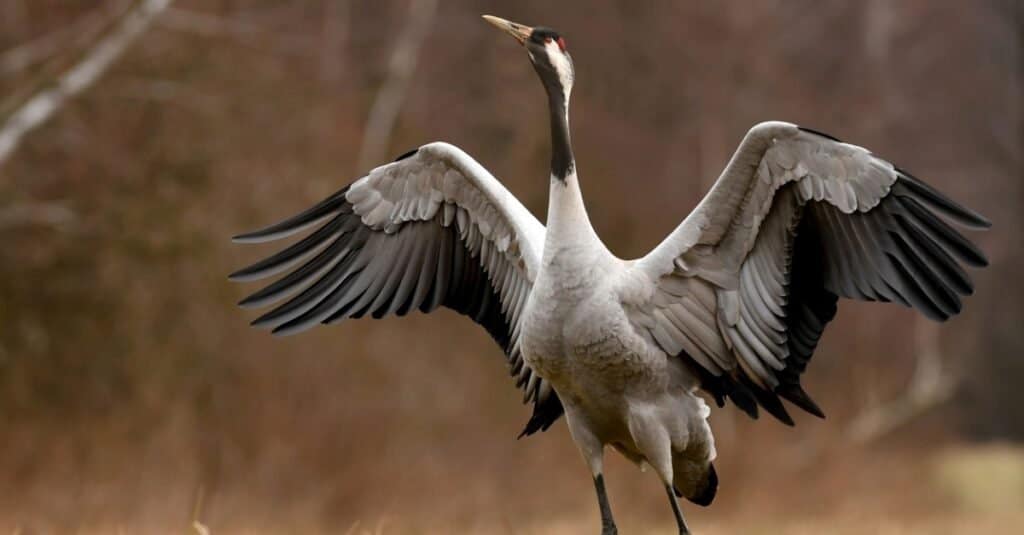
A crane has a mating dance that looks like a lady dancing.
©iStock.com/Piotr Krzeslak
The birds from the line “nine ladies dancing” could be cormorants (Phalacrocorax carbo) or the crane (Grus grus). Cormorants seem to dance elegantly because of their bobbing stance, and cranes are also known for their mating dance. Cranes also symbolize being ladylike and elegant, and they bow and leap in front of a desired partner.
10. Ten Lords-a-Leaping
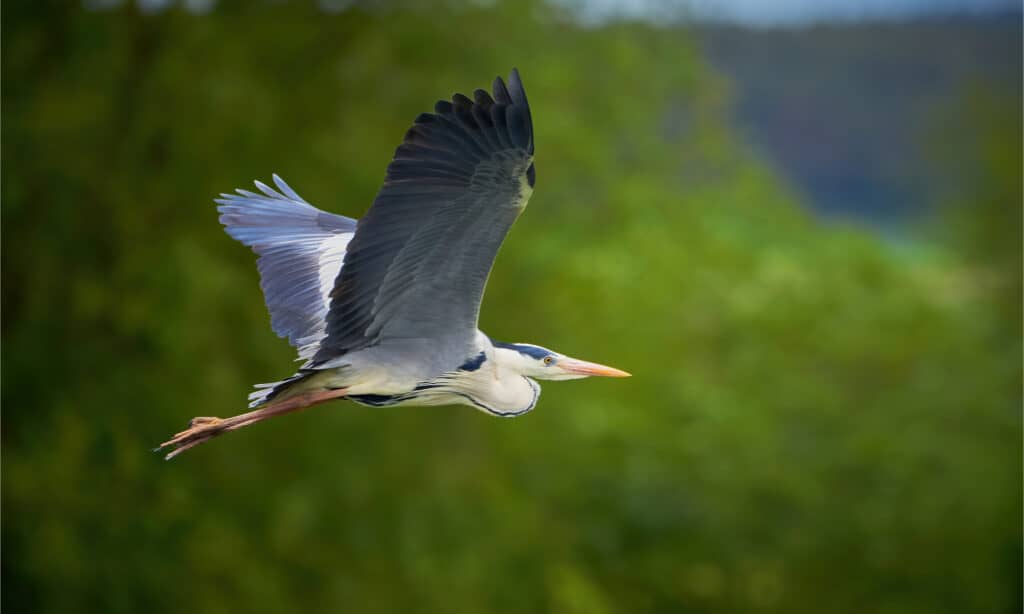
Grey herons have to leap into the air when they’re ready to fly.
©Adrian Eugen Ciobaniuc/Shutterstock.com
Grey herons (Ardea cinerea) are likely the birds from the tenth day of Christmas. These birds leap into the air to take flight and look like hunched over old men when their necks are bent, symbolizing the lords-a-leaping reference.
11. Eleven Pipers Piping

The sandpiper could be the eleventh birth in the song The 12 Days of Christmas.
©iStock.com/yod67
You may not initially think of birds when you hear the “eleven pipers piping” line, but it fits the theme when considering the sandpiper species (Actitis hypoleucos). There are 25 sandpiper species worldwide, and you can find them on shorelines even when the weather gets colder. Sandpipers have a three-note cry that sounds like piping, so it could be the significant bird in this line.
However, if you’re not convinced the song refers to the sandpiper species, another option is the piping plover (Charadrius melodus). Piping plovers are an endangered species, so the lyrics saying a true love gave 11 pipers piping would be an amazing gift.
12. Twelve Drummers Drumming
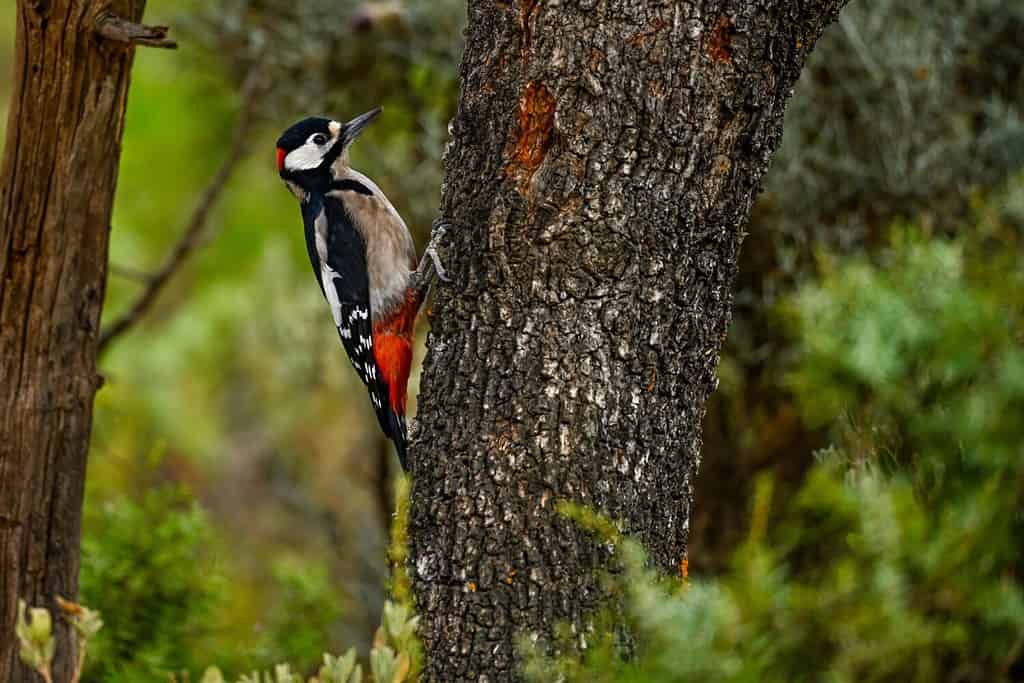
The spotted
woodpecker
is known for its distinct ‘drumming’ display.
©Agorca/Shutterstock.com
When you think of a drumming bird, the spotted woodpecker (Dendrocopos major) might come to mind. This bird is known for its ‘drumming’ display, where he drums his beak against wood around 20 times in two seconds to establish his territory.
Another bird it could reference is the Snipe (Gallinago gallinago). Snipes have tail feathers that produce vibrations that make a drumming sound when it swoops downward.
Summary of Birds From the 12 Days of Christmas
| Day of Christmas | Bird of Christmas |
|---|---|
| 1 | Partridge |
| 2 | Turtle doves |
| 3 | French hens |
| 4 | Blackbirds |
| 5 | Ring-necked pheasant |
| 6 | Greylad goose |
| 7 | Mute swan |
| 8 | Magpies |
| 9 | Cormorants or cranes |
| 10 | Grey herons |
| 11 | Sandpiper |
| 12 | Spotted woodpecker |
The photo featured at the top of this post is © iStock.com/SteveByland
Thank you for reading! Have some feedback for us? Contact the AZ Animals editorial team.






